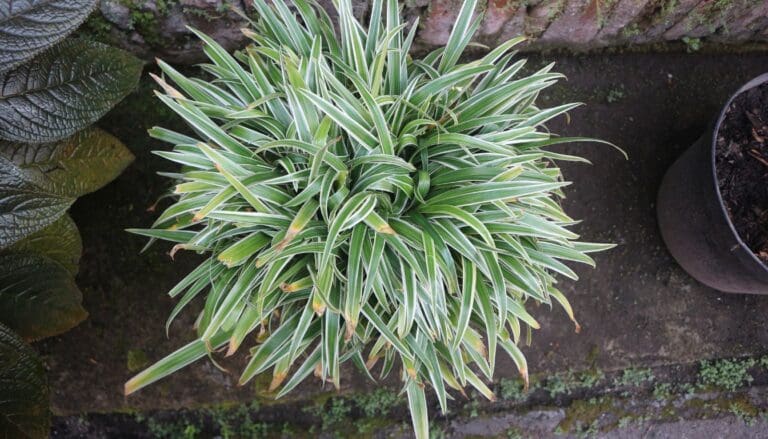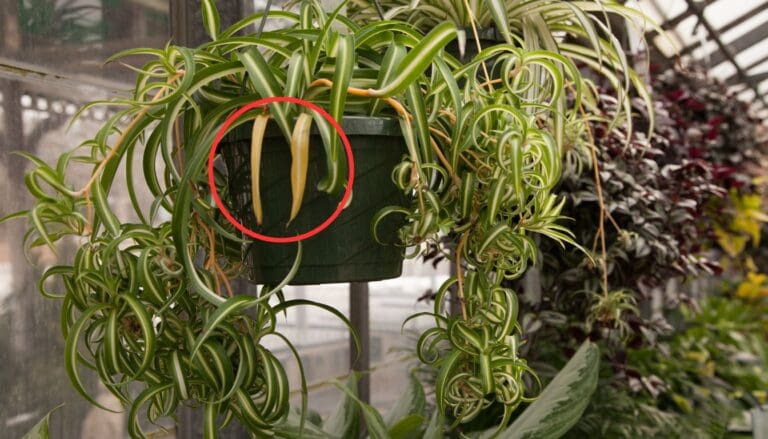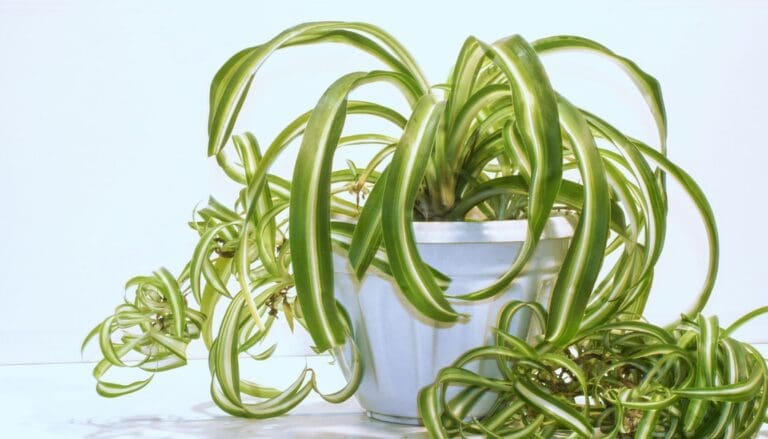7 Reasons Why Your Snake Plant Never Produces Pups and How to Fix It
Snake plants are super popular. They’re easy to care for and look great in basically any room.
I’ve noticed, though, that mine sometimes just refuse to grow new pups, no matter what I try. If you’re wondering why your snake plant isn’t producing pups, you’re definitely not alone.
Let me share some common reasons and fixes that have helped me get my plants back on track.

Please note: Simplify Plants is reader-supported. As an Amazon Associate, I earn from qualifying purchases made by our readers with no extra cost added to you all! Some links in the post are affiliate links and I get a commission from purchases made through links in the post.
1) Insufficient Light Exposure

I’ve realized snake plants need the right amount of light to grow pups. Without enough, my plant just sits there, growing slow and not making any babies at the base.
Bright, indirect light is really the sweet spot. If I stick mine in a dark corner or way across the room from a window, it gets weak and, honestly, a little sad-looking.
When my snake plant lives somewhere too dim, the leaves can look dull or stretched out. That’s usually my cue it’s not getting enough juice for new growth.
Moving it closer to a window—or even adding a grow light—can make a surprisingly big difference. I do watch out for sunburn, though, since too much direct sun can wreck those leaves fast.
Good lighting just encourages my snake plant to use its energy for new pups. I try to give it as much natural, filtered light as possible. When I get the lighting right, I usually see a little burst of growth within a few months.
2) Overwatering Stunts Pup Growth

Too much water? Yeah, it’s a problem. I’ve learned that overwatering can really mess up snake plants.
Snake plant roots need air. If the soil stays soggy, roots can’t breathe and start to rot—yikes.
I’ve noticed that overwatered snake plants look pale and weirdly soft. The leaves might even flop over or get mushy. Healthy roots are firm and white, but rotting roots turn brown and gross.
If pups aren’t showing up, I always check the soil. Is it wet days after watering? Yeah, that’s too much. Letting the soil dry out between waterings really helps.
Drainage holes are a must. Good drainage keeps extra water away from the roots and saves a ton of headaches.
If I’ve overdone it, I let the soil dry out completely. Sometimes I even repot with fresh, dry soil if the roots look sketchy. Healthy roots mean the plant can focus on growing pups again.
So, less is more when it comes to watering snake plants. That’s my motto now.
3) Lack of Nutrients in Soil

Snake plants need healthy soil to make pups. If the nutrients are gone, my plant just hangs in there, not really growing much.
Old or poor-quality soil? That’s a sneaky culprit. Over time, soil runs out of the good stuff. If I don’t refresh it or add a little fertilizer, my snake plant may stop growing pups.
I check the soil every few months. If it looks tired or washed out, I’ll add some fresh potting mix or a gentle houseplant fertilizer.
Nitrogen, phosphorus, and potassium are the big three for growth. Without them, my plant just kind of limps along.
I avoid dumping in a ton of fertilizer, though. Too much can backfire and hurt the roots.
4) Plant is Too Young to Pup
Sometimes, my snake plant just needs more time. They don’t usually make pups until they’re good and mature.
Younger snake plants focus on making leaves and roots first. Once the plant gets bigger, that’s when the pups usually show up.
If I’ve only had my snake plant for a year or less, I try not to worry. Some take two or three years to get going with pups.
I stick with the basics: sunlight, water, and a little space. That helps it grow up healthy and strong.
I don’t rush it. Sometimes, all it needs is time. When it’s ready, those new pups will pop up at the base—eventually!
5) Incorrect Pot Size Limits Growth

Pot size really does matter. If my snake plant’s in a pot that’s too small, the roots get jammed up and there’s nowhere for pups to grow.
When I leave my plant in a cramped pot, it’s just trying to survive. No energy left for baby plants.
But if the pot’s too big, the soil stays wet forever, which can cause root rot. My snake plant seems happiest in a pot just a little bigger than its root ball.
Repotting every few years gives it the space it needs. I always make sure there are drainage holes, too.
Getting the pot size right just makes it easier for pups to show up and thrive.
6) Stress from Frequent Repotting

Moving my snake plant around too much? Not great. Frequent repotting can really hold back new pups.
Snake plants like stability. They don’t need to be repotted every year, and too much change just stresses them out.
Every time I repot, the roots get jostled. Instead of making new shoots, the plant’s just trying to recover.
If I keep fussing with the pot or soil, my plant gets overwhelmed. The roots need time to settle before the plant feels safe enough to make pups.
I’ve found it’s best to only repot when the plant has really outgrown its pot or if the soil’s just done. Less disturbance means healthier roots and more pups, honestly.
I check the roots and soil before deciding to repot. If there’s still room, I just leave it. Giving my snake plant a stable home seems to be the key.
7) Low Ambient Humidity

Low humidity can really slow things down. Snake plants like it when the air isn’t bone dry.
If the humidity drops, my plant has to work harder just to stay hydrated, let alone make new pups.
When the air in my house is dry—especially in winter or when the heater’s on—my snake plant gets less of the moisture it likes. Sometimes the leaf tips turn brown or the leaves get kind of thin.
To help out, I try to keep the humidity around 40-50% if possible. A little humidifier or even a tray of water nearby can help. Grouping plants together also seems to boost humidity for everyone.
If I want more pups, I make sure my snake plant isn’t stuck in dry air for too long. A bit more humidity can really make a difference in its growth.
Understanding Snake Plant Growth Patterns
Snake plants have their own quirky way of growing and making new shoots—called pups. I’ve found it helps to know how they form pups and what stages affect the process.
Natural Propagation and Pup Development
Snake plants spread by making new shoots, or pups, that pop up from their roots. These usually show up near the base of the main plant. It’s called vegetative propagation.
Not every healthy plant will grow pups right away. Certain things seem to encourage pup growth:
- Enough light (bright, indirect is best)
- Not being root-bound, but a little crowding helps
- Healthy, undamaged roots
If I keep the soil too wet or let the plant sit in the dark, pups just don’t show up. Stress can make pup growth slow down or stop altogether. But if I keep things calm and steady, the plant puts more energy into making pups.
Typical Growth Cycle for Snake Plants

Snake plants have a slow, steady growth cycle. Most of the action—like pups popping up—happens in spring and summer when there’s warmth and more daylight.
During winter, snake plants basically chill out. Growth either stalls or crawls along at a snail’s pace.
Honestly, it can take a couple of years before a snake plant is mature enough to push out pups. I try to remind myself not to rush it and just keep things steady.
Once the plant’s ready, you might spot tiny pups poking through the soil near the base. It’s a bit of a waiting game, but it’s worth it.
How Environmental Factors Affect Pup Production
Pup production in snake plants really depends on a handful of things. Paying attention to light, temperature, soil, and watering habits can seriously change the outcome.
The Role of Light and Temperature
I’ve found my snake plant likes bright, indirect sunlight for decent growth. Without enough light, pups just don’t show up.
If I stick the plant in a dark corner, it’s like hitting pause on growth. But too much direct sun? The leaves get scorched and the plant gets stressed out—definitely not ideal for pups.
Temperature’s a big deal too. Snake plants seem happiest between 60°F and 85°F (16°C–29°C). When things dip below 50°F (10°C), growth almost stops entirely.
Keeping things warm and steady helps the plant send out new shoots. I try to avoid cold drafts and sudden changes.
If I’m hoping for more pups, I make sure my plant gets lots of light—just not the harsh midday sun—and stays nice and warm.
Soil Conditions and Watering Practices
Good soil matters a lot for roots and new pups. I stick with a well-draining potting mix, usually something made for cacti or succulents.
Heavy or clay soil just holds onto water and can cause root rot, which stops pup growth in its tracks. That’s a headache I’d rather avoid.
When it comes to watering, I let the soil dry out almost completely before adding more. Overwatering is probably the quickest way to kill a snake plant’s vibe.
Too much water means root rot, and without healthy roots, there’s no chance for new pups. On the flip side, if I forget to water for too long, growth slows down too.
I usually poke my finger in the soil—if it’s dry about 1–2 inches down, that’s my cue to water. It’s not a perfect science, but it works for me.
Frequently Asked Questions
How often should I water my snake plant to promote pup growth?
I let the soil dry out completely between waterings. Overwatering can stop pups from growing and sometimes even harm the plant.
I usually water mine every 2-3 weeks, but honestly, I just check the soil first to be sure. No strict schedule here.
What lighting conditions are ideal for snake plants to thrive and produce pups?
Bright, indirect light works best for my snake plant. Direct sun can burn the leaves, while low light slows growth and reduces pups.
I keep my plant near a window with filtered sunlight, and it seems happy there. Not too fussy, just not in the dark.
Could you tell me which soil mix is best for nurturing snake plant pups?
I use a well-draining soil mix. A cactus or succulent mix is great because it doesn’t hold too much water.
I’ll sometimes add a bit of perlite to help water drain away even faster. It’s simple, but it keeps the roots happy.
What are some common mistakes to avoid when caring for a snake plant?
I avoid overwatering, using heavy soil, and leaving my plant in a dark corner. I make sure not to use a pot without drainage holes.
Also, I don’t use a pot that’s too tiny—snake plants need a bit of room to stretch out and make pups.
Can you suggest a feeding schedule to help my snake plant produce pups?
I fertilize my snake plant once every spring and summer with a balanced, diluted fertilizer. I never over-fertilize, as that can cause more harm than good.
In fall and winter, I just skip the fertilizer altogether. The plant’s not really hungry then anyway.
How do I know if my snake plant is healthy enough to produce pups?
Healthy leaves look firm and upright, with strong green color. My plant usually puts out new leaves every year or two.
If I spot brown tips or mushy spots, I’ll double-check my care routine and try to tweak things. Healthy roots and leaves? That’s a pretty good hint pups might be on the way, though you never really know for sure with these stubborn plants.
Recommended Garden Supplies
| Product Image | Our Recommended Gardening Supplies | Check Offers! |
|---|---|---|
Top Top
Top
Top
Top
Top
Top
Top
Top | rePotme Houseplant and Tropical Classic Potting Soil Mix | Check Offer On Amazon |
 Top
Top
Top
Top
Top
Top
Top
Top | Espoma Organic Indoor Plant Food | Check Offer On Amazon |
 Top
Top
Top
Top
Top
Top
Top
Top | GooingTop LED Grow Light 6000K Full Spectrum Clip Plant Growing Lamp | Check Offer On Amazon |
 Top
Top
Top
Top
Top
Top
Top
Top | Soil Moisture Meter | Check Offer On Amazon |
 Top
Top
Top
Top
Top
Top
Top
Top | Govee Hygrometer Thermometer, Bluetooth Enabled! | Check Offer On Amazon |
 Top
Top | LEVOIT Humidifiers for Large Room(Best For Plants) | Check Offer On Amazon |
 Top
Top
Top
Top
Top
Top
Top
Top | Upgraded DIY Automatic Drip Irrigation Kit, 15 Potted Houseplants Support | Check Offer On Amazon |
 Top
Top
Top
Top
Top
Top
Top
Top | Stainless Steel Heavy Duty Gardening Tool Set | Check Offer On Amazon |
 Top
Top
Top
Top
Top
Top
Top
Top | Bonide Insecticidal Soap | Check Offer On Amazon |
 Top
Top
Top
Top
Top
Top
Top
Top | Bonide 32 oz Spray Neem Oil for Organic Gardening | Check Offer On Amazon |
 Top
Top
Top
Top
Top
Top
Top
Top | Garden Safe Fungicide | Check Offer On Amazon |







